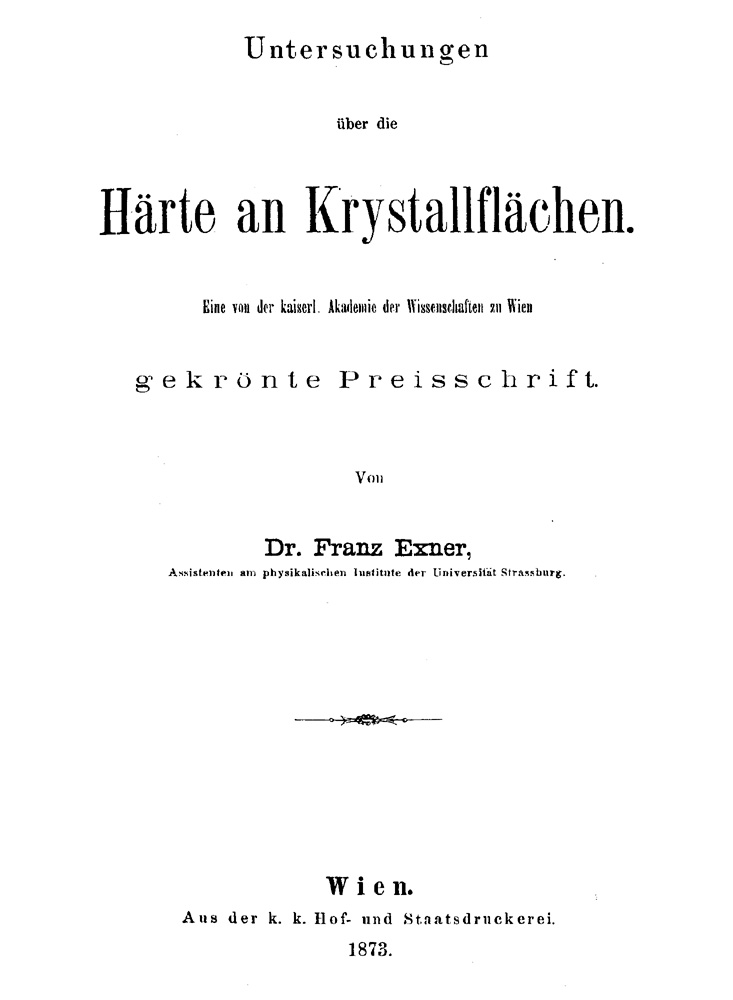EXNER, Franz Serafin.
(1849 – 1926)
Educated at the University of Vienna (Ph.D., 1871), Exner was a founder of modern experimental and theoretical research in atmospheric electricity. He studied the contact potentials between heterogeneous substances and developed a theory to explain them. He wrote a highly esteemed textbook on the spectra of the elements. Exner was also an early supporter of Helmholtz's three component theory of color.
Biographical references: Almanach der Akademie der Wissenschaften in Wien: 77 (1927), 179-84. • DBA: II G 9, 96-96. • Internet search. • NDB: 4, 699. • Österreich Biographisches Lexikon: 1, 275. • WBI.

1. German, 1873.
Untersuchungen | über die | Härte an Krystallflächen. | Eine von der kaiserl. Akademie der Wissenschaften zu Wien | gekrönte Preisschrift. | Von | Dr. Franz Exner, | Assistenten am physikalischen Institute der Universität Strassburg. | [ornate rule] | Wein. | Aus der k.k. Hof- und Staatsdruckerei. | 1873.
8°: [2], [1]-166 p., 68 plates.
Very scarce. Hardness as it applies to minerals was a subject thoroughly investigated by Exner in his important Untersuchungen über die Härte an Krystallflächen. After providing a short historical introduction to previous investigations into the hardness of minerals, Exner attempts to place the study on firm scientific foundations. Hardness had previously been a physical characteristic that had been a relative measure between two or more mineral species. Now however, Exner described the forms of hardness across the faces of many crystals in a series of curves of hardness. He obtained the measurements by determining the least amount of weight required to scratch a crystalline surface in different directions for each 10° or 15° from 0° to 180°, as determined by a sclerometer (an instrument used to measure hardness). These directions are laid out as radii from the center, and the length of each is made proportional to the weight fixed by experiment. These points are then connected, and a specific hardness diagram for the mineral determined.
Bibliographical references: BL [8716.dd.1.]. • NUC: ??, ??.
.